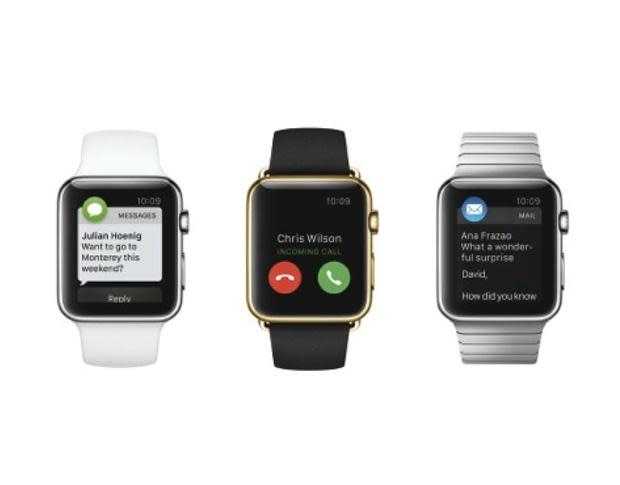Apple releases guidelines for third-party watch band makers

With the Apple Watch in customer hands for a week-and-a-half now, Apple has lifted the curtain a bit on what third-party accessory makers will be able to do with its newest and hottest product.
Before it was released, there were numerous Kickstarter campaigns and pre-announcements by companies eager to jump on the Apple Watch bandwagon. Some claimed to include a battery that could charge the Apple Watch while it was worn, or any number of other abilities.
However, it seems that many of those ideas are impractical (to be generous) or perhaps nearly impossible. The Apple Watch is designed to have its back--where the heart-rate sensor is located--physically touching the skin of the wearer at all times. That's also where the magnetic charging port is located. This means that the Apple Watch can either charge or be worn, but not both at the same time.
Apple has laid out some guidelines (including the one about not allowing charging from a wrist strap) in a short guide to manufacturers outlining what is and is not allowed if they're to take advantage of the "Made for Apple Watch" program. Similar programs exist for the iPhone, iPad, and iPod, with strict guidelines in place that manufacturers must meet in order to get a coveted "Made for i" badge for their packaging.
The guidelines are meant to ensure that Apple's customers receive the highest levels of quality with their third-party watch bands and that they aren't overrun by cheap imitations.
The part of the band that attaches to the Apple Watch is called the lug. Bands "must" use the lugs to connect to the Apple Watch--no external cases are allowed. Apple has lots of guidelines for the band, beyond the lugs, however, including:
both bands and lugs must pass a 72-hour "salt mist test" with no visible corrosion
bands must resist a 5-20 kilogram force later slide-out force--essentially, they must stay installed in the Apple Watch even when pushed on
bands must resist a 20 kgf pull force, the same as a diver's watch
bands must detach easily when the band release buttons on the Apple Watch are pressed
bands must take into account the weight of the Apple Watch
Apple says that lug bodies should be made of hard silicone, glass-filled nylon, or 316 L stainless steel. Bands should be adjustable enough for the user "to achieve a snug, yet comfortable, fit that prevents movement of Apple Watch relative to skin." This is key to ensuring that the heart rate monitor works. Apple goes on to say that bands can't prevent the user's skin from maintaining direct contact with the back of the Apple Watch.
The guidelines, which are published in a 13-page PDF on Apple's website, teach us a few things about Apple.
For one, Apple is fanatical about attention to detail and really wants to ensure that users have a reliable and pleasant experience with their Apple Watch. Also, the company has an enormous amount of power.
The guidelines are extremely restrictive, possibly preventing a lot of ingenuity and creative design for their customers. Similar to the App Store, Apple isn't focused on freedom for its accessory makers or developer partners. It's focused on the user experience.
By restricting what its partners can do, the company ensures a good experience for its customers. Apple knows that the customer experience is the most important thing. If a customer buys a third-party band for their $400 Apple Watch and has a bad time with it, they may (and likely will) blame Apple. And, even worse, they'll probably tell their friends about their crappy experience.
That's why Apple takes this so seriously, and why it's even a little bit surprising that Apple plans to allow third parties to build bands at all.
Are you interested in buying a third-party band for the Apple Watch? With all the focus that Apple has put on fashion, do you think big fashion labels might release their own bands? Let us know your thoughts in the comments below.

